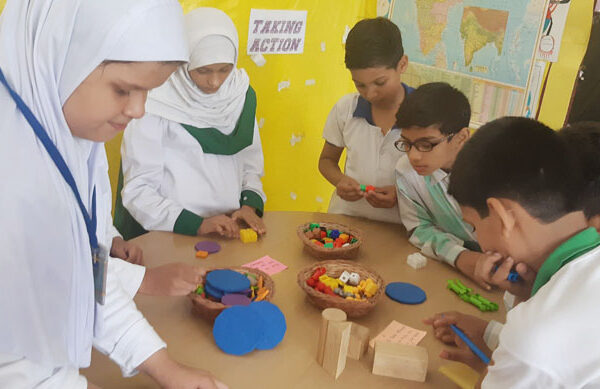PRIMARY YEARS PROGRAMME (PYP)
The Primary Years Programme (PYP) promotes international-mindedness. The program aims to promote inquiry and foster the development of children aged 3-12 years through a unique “trans-disciplinary framework.” The framework creates lifelong learners yielding curiosity, questioning, and wondering about the world around them. It is a totally student-led programme wherein the students take the sole responsibility of their in-depth learning.
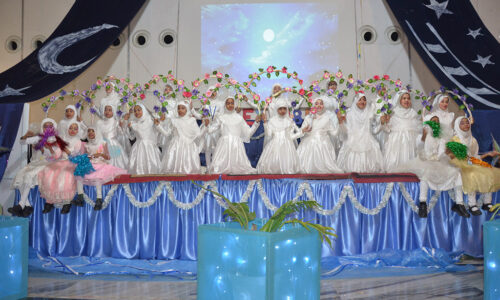
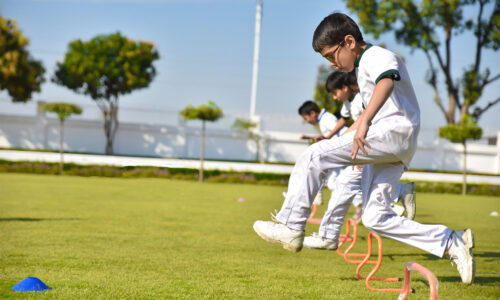
PYP CURRICULUM
The PYP Curriculum encourages students to look at the local and global challenges constructing their own learning and deepen it through the inquiry process. The curriculum is basically designed for the children between 3 to 12 years old. At EPS, we promote the international perspective of each child from the very early age.
TRANS-DISCIPLINARY THEMES
As the curriculum incorporates questioning and skill development, the students work on six trans disciplinary themes which are:
- Who we are
- Where we are in place and time
- How we organise ourselves
- How we express ourselves
- Sharing the planet
- How the world works
At PYP, the students work on these themes connecting them with the real-life situations.
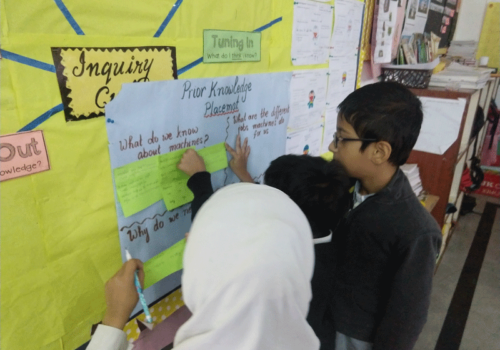
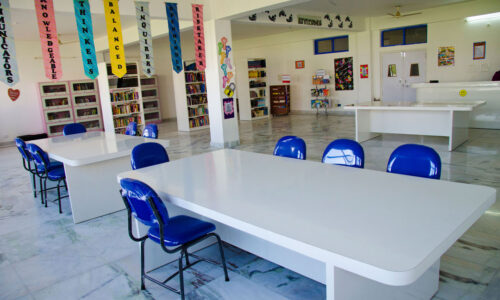
KEY CONCEPTS
There are few ‘Key Concepts’ on which the students work making them understand the Trans disciplinary themes more appropriately which are as follows:
- Form
- Perspective
- Change
- Function
- Connection
- Causation
- Responsibility
Asking questions and finding out the answers on their own is the primary thing students do at EPS PYP.
IB LEARNER PROFILES
Through inquiry-based learning, the students develop ten IB Learner Profiles. These are the common set of values that leads the students to triumph over boundaries and emerge as international minded individuals.
At EPS, students strive to become…
- Inquirers
- Knowledgeable
- Thinkers
- Communicators
- Principled
- Open-minded
- Caring
- Risk-takers (Courageous)
- Balanced
- Reflective
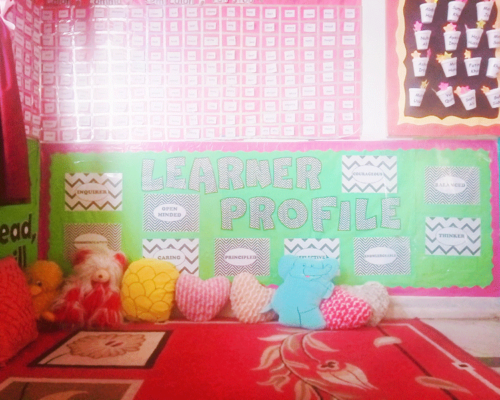
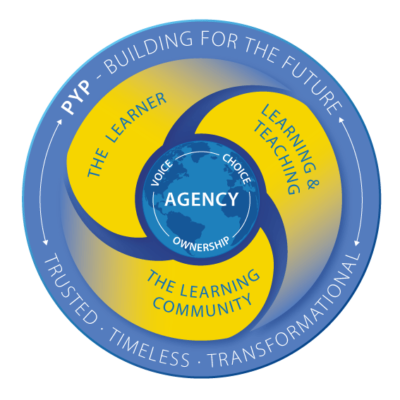
The PYP curriculum framework emphasizes the central principle of agency that is threaded throughout the three pillars of the curriculum: the learner, learning and teaching, the learning community. Augmenting the focus of the “written, taught and assessed” curriculum with the human elements-—the learner and the learning community—underlines that everyone connected to the school community has voice, choice, and ownership to impact learning and teaching. These holistic components complement and reinforce each other to form a coherent whole.
The learner:
describes the outcomes for individual students and the outcomes they seek for themselves (what is learning?). The PYP curriculum framework begins with the premise that PYP students are agents of their own learning and partners in the learning process. They have innate potential to inquire, question, wonder and theorize about themselves, others, and the world around them. This understanding of how students learn is foundational to the inquiry-based and concept-driven transdisciplinary model of learning and teaching. Through engaging with the programme of inquiry and reflecting on their learning, PYP students develop knowledge, conceptual understandings, skills and the attributes of the IB Learner Profile to make a difference in their own lives, their communities, and beyond. (Source: My IB)
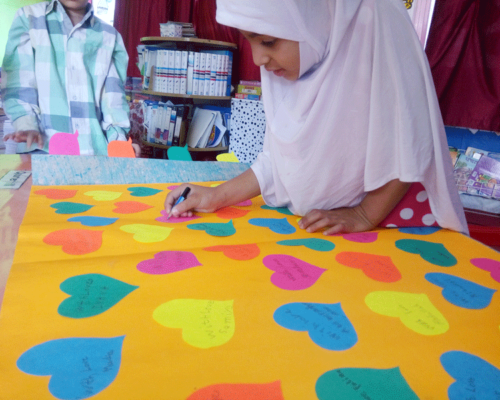
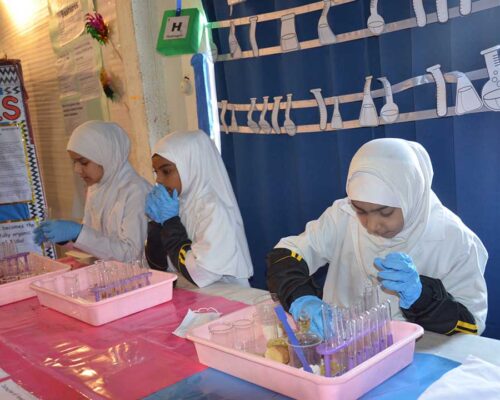
Learning and teaching:
articulates the distinctive features of learning and teaching (how best to support learners?). Learning and teaching in the PYP curriculum framework is simultaneously an articulation of what is worth knowing, the theory and supporting practice, and an interpretation of the PYP in action. It reflects the dynamic interplay between how students learn best, what has been learned, and what are the next steps in learning. The approaches to learning and approaches to teaching articulated in What is an IB education? play a crucial role in the inquiries into the six transdisciplinary themes aimed at promoting understandings about human commonalities of local, national and global significance. Using these approaches, students draw knowledge from subjects, enduring concepts, and skills to actively connect prior and new experiences to broaden their understandings about the world. (Source: My IB)
TECHNOLOGY IN THE PYP
Technology plays a key role in an inquiry-based programme that aims to support the development of international-mindedness and attributes of the learner profile. PYP creates opportunities for students to develop explicit knowledge and skills relating to technology, apply technology to facilitate and extend learning, and adapt it in new ways to create solutions to challenges and opportunities. (Source: My IB)
Technology learning and teaching in the PYP are supported, strengthened, and extended within the transdisciplinary programme of inquiry where students can apply technology in purposeful and authentic contexts. Coherent integration of technology enhances student agency, enabling students to learn in different contexts.
Our PYP makers spaces are designed specially for our PYP students to integrate the design thinking process into their learning.
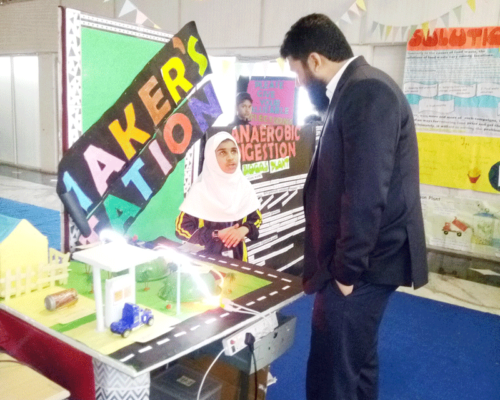
PYP CLASSROOMS AT EPS
PYP classrooms include various educational resources, smart boards, and digital infrastructure to fortify concepts essential for students’ learning needs.
Learning spaces at EPS support the development of approaches to learning and enhance connections between, across and beyond subjects within and outside of the transdisciplinary programme of inquiry. They support investigation and research and provide opportunities to revisit earlier inquiries to build understanding. They also invite critical and creative thinking and represent different cultures and contexts.
Our PYP classrooms are flexible, allowing for planned and spontaneous opportunities for quiet, independent learning, interactive group learning, and spaces for students to make and create.
Learning spaces are designed with different combinations of resources that interact to support learning and teaching.
Each grade has a distinctive learning style to shape up students’ profiles and develop important skills through inquiry.
Students easily select books of their choice, interact, reflect and learn with peers.
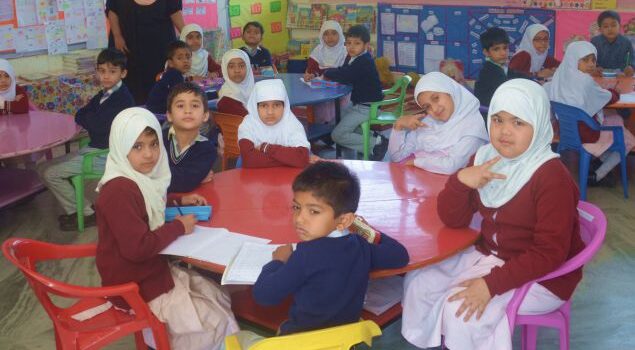
Assessment in the Primary Years Programme
Assessment is an ongoing process of student learning to inform teaching. Assessment involves teachers and students collaborating to monitor, document, measure, report, and adjust learning. Students actively engage in assessing and reflecting on their learning, acting on feedback from peers and teachers to feed-forward to the next steps in learning. Learning goals and success criteria are co-constructed and clearly communicated. Both learning outcomes and the learning process are assessed. Assessment design is both backward and forward-looking. (Source: My IB)
The purpose of assessment is to inform learning and teaching. It involves the gathering and analysis of information about student learning to inform teaching practice. It identifies what students know, understand, and can do at different stages in the learning process. (Source: My IB)
Effective PYP assessment practice holistically integrates assessment for, of, and as learning (Harlen, Johnson 2014) to support effective learning and teaching.
PYP assessment informs the learner, learning and teaching, and the learning community through the monitoring, documenting, and measuring of learning. (Source: My IB)
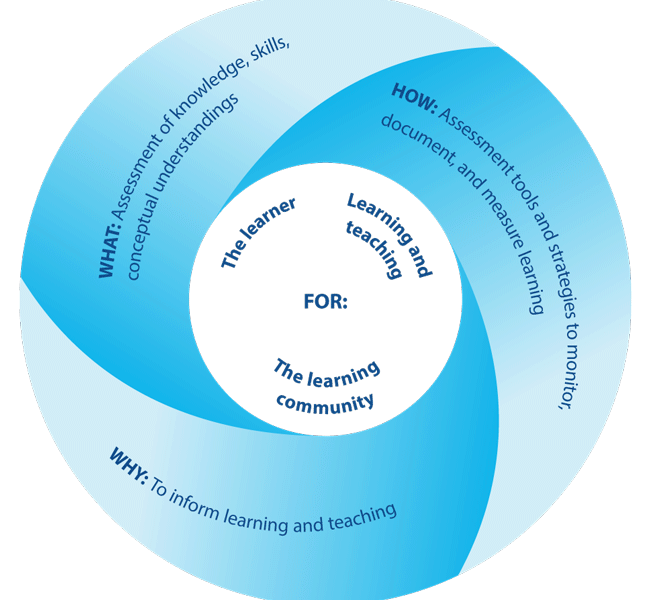
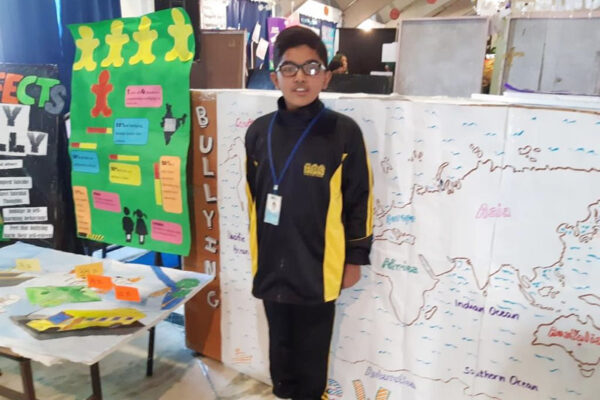
THE PYP EXHIBITION
The students of grade five exhibited and demonstrated their research projects in the first-ever virtual PYP exhibition under the theme ‘Sharing The Planet’ which offered the solutions to the problems dealing with global issues and suggested the actions taken to resolve the real-life concerns.
Notably, the parents along with the whole school community were part of this virtual exhibition. It was an enthralling experience for the audience as the students with much buoyancy and confidence interacted with them and explained each concept.
The students were divided into different groups to conduct research on topics like Hunting and Poaching, Cyber Crime, Life Below Water, Peace and Justice, Health and well-being. To spread a mass awareness the students also created blogs, websites; had virtual trips and expert talks. This exhibition was a result of rigorous inquiry which the students carried out under the guidance of teachers and mentors.
Interestingly, this exhibition gave an opportunity for students to exhibit the attributes of the IB Learner Profile that have been developing throughout the programme. Students are given flexibility in their choice of real-life issues to be explored and investigated in the Exhibition.
